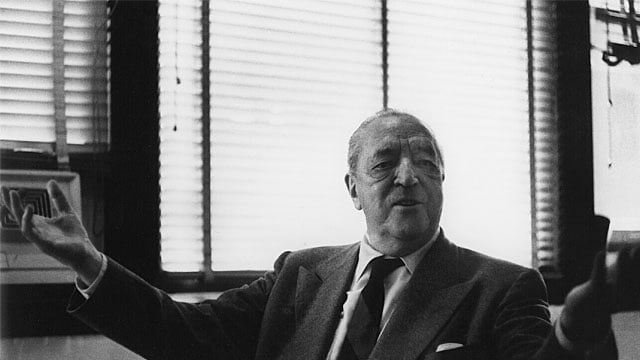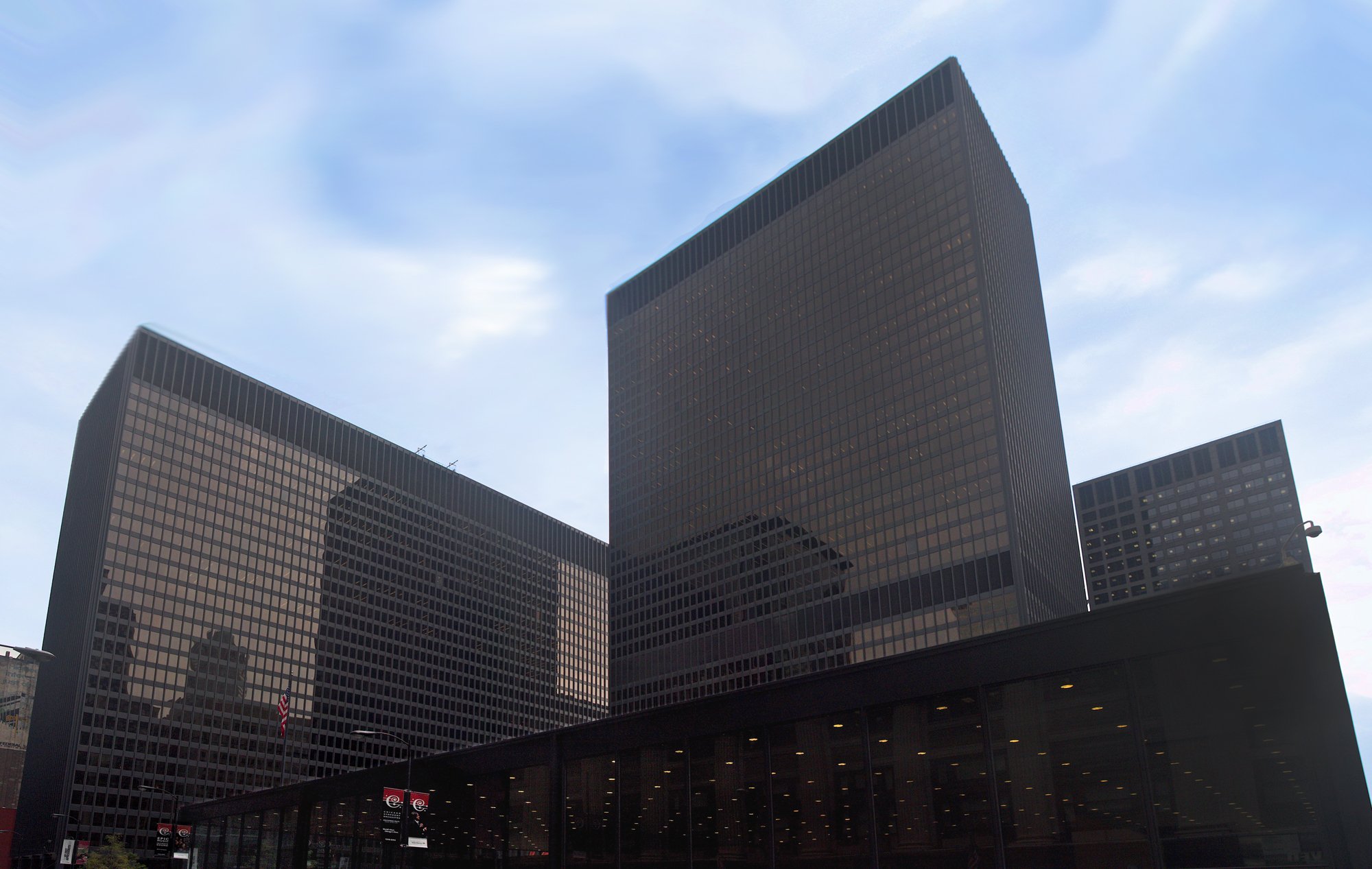

A pioneer and master of modern architecture, Ludwig Mies van der Rohe was born in Germany and immigrated to the U.S. in 1937. After an assignment as director of architecture at the Illinois Institute of Technology (then known as the Armour Institute), he went on to design important — and assertively modern —commercial, residential, and civic buildings in the U.S., Canada, and around the world.
Mies’ aesthetic was influenced by his experience with Walter Gropius and the German Bauhaus, and by his desire to demonstrate that “less is more.” In Chicago, Mies’ most iconic project is the Chicago Federal Center, whose three buildings illustrate his stark, elegant modernism. The Federal Center defied previous expectations of what civic structures should look like.
Like Louis Sullivan, Mies believed that every element of a structure should work as part of a unified whole. In a 1958 interview, he said, “Architecture is a language … and if you are really good, you can be a poet.”
He also said, “I don’t want to be interesting. I want to be good.”
Mies died in Chicago in 1969 at age 83.

